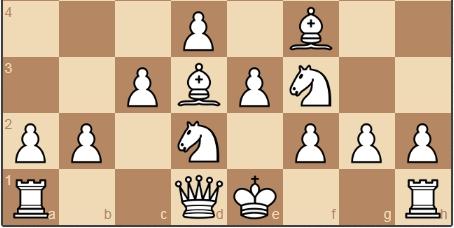
The Ultimate London System
Introduction to the London System...
I have been playing the London System for years now and it's time I pay tribute to a historic chess monument from the 19th century, but first a little intro...
The London System is one of the oldest and most solid systems in Chess, and belongs to one of the few Queen pawn variations that hasn't theoretically changed a lot. I think the main reason is that there is only one plan for white: Just set up d4, Bf4, Nf3, e3, c3 and h3. And maybe play e4 in the future. But this isn't just a simple truth. If black responds inaccurately he will find himself in a lifeless position where he will be under pressure from whites positional advantage. I can't claim the London can promise an objective advantage but it takes all most no time to prepare, it's very sound and leads to original and unexplored positions where you can squeeze opponents unfamiliar with the positions. Most other openings can't offer this without learning loads of theory. "Bamboozle Your Opponent with the London System!"
Some history on the London System
 19th century Irish master James Mason, 1849-1905
19th century Irish master James Mason, 1849-1905
James Mason (actually he was adopted and his birth name is unknown) played the London System several times in the 1880's and for a while this line was called the Mason variation, in his honor. Even attacking players such as Alekhine have played the system. The London doesn't have to be played in timid fashion.
The Robust and Universal London System
The London is practically good enough against any line after 1.d4 but it's better against some lines than others. Still most replies are playable against the London but white's positional pull is omnipresent.
You can play the London against:
1.d4 c5 2.c3 then 3.Bf4...
1.d4 Nf6 2.Bf4 d5 3.Nf3...
1.d4 d6 2.Nf3 f5 3.Bf4...
1.d4 e6 2. Nf3 g6, d5 or Nf6 then 3.Bf4...
1.d4 Nf6 2.Bf4 c5 e3 or c3....
1.d4 d5 2.Bf4 c5 3.c3...
1.d4 d5 2.Bf4 Nf6 3.Nf3 e6 4.e3...
1.d4 f5 2.Nf3 or Bf4 ...
The Flexible London System
The London has many subtleties and is purely defined by the moves d4 and Bf4.
Here are a few of the possible set ups I've had success with:
1. d4-Bf4-e3-c3-Bd3-Nbd2-Nh3 the so called Patzer-Knight variation (not bad to play a surprise weapon)
2. d4-Bf4-Nf3-e3-Nbd2-c4 a less solid and more ambitious approach using the London.
3. The Barry Attack (a.k.a Jobava Prix Attack) is for not for the faint of heart. It is relatively a modern treatment of the London and it's very aggressive. It's possible to score many quick wins with it. It goes:
d4-Bf4-Nc3- Qd2, h4 or e3 then with I ideas of h4-h5-Rxh5! Sacs, and Nb5 attacking c7 is a typical theme. f3-g4 is typical as well. If you want to play more solidly Nf3 planning Ne5 is also good. Here is a loss by the young Indian GM prodigy against the Barry Attack. Although to be fair he got revenge on this line by beating Wesley So and Axel Bachmann as the black side of it.